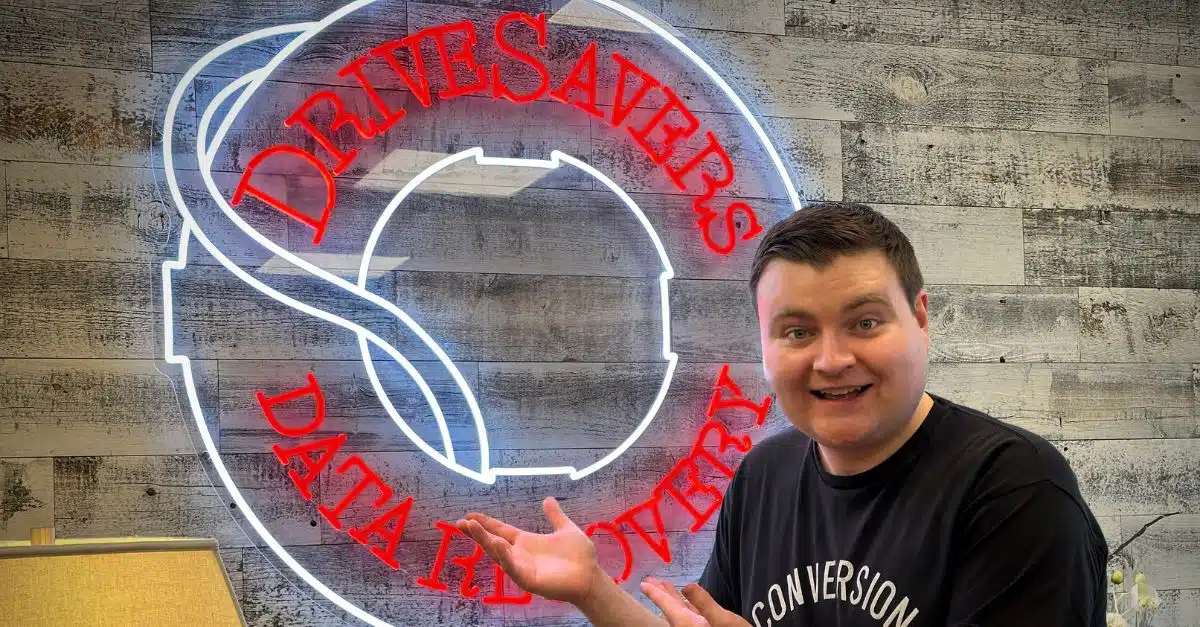Highlighting the sensitive nature of data recovery, Cobb explained how DriveSavers uses protocols like DocuSign agreements to validate ownership and protect customers’ information.
Inside Big Data: What You Have Wrong—Three Myths about RAIDs

Originally published by Inside Big Data.
By Mike Cobb, Director of Engineering at DriveSavers
DriveSavers has performed tens of thousands of RAID data recoveries in our history. Yes, we’ve seen our share of RAIDs. We’ve also heard our fair share of stories—some accurate and others, not so much.
Ready to get your facts straight? Here are three common myths about RAIDs.
Myth #1: All RAIDs are Redundant
Redundancy is one of the two biggest reasons users choose to use RAIDs, the other being performance.
Most RAID setups provide redundancy, in which the same data is located on different drives. This is beneficial for two reasons: 1) if a drive fails, it can be replaced without loss of data or interruption of work; and 2) basic physical maintenance can often be performed (i.e. swapping older drives before they crash, etc.) without interruption to work.
But despite the word “redundancy” being the first letter of RAID (redundant array of independent disks), not all RAIDs actually have redundancy incorporated.
A RAID 0 setup involves “striping” data across 2 or more drives so that different pieces of a single file live on every drive in the system. RAID 0 does not include copies of the data and, therefore, is not redundant. No matter how many drives are incorporated into this setup, if just one drive experiences a physical failure, the whole RAID is immediately inaccessible and data is lost. In fact, for this reason the chances of losing data are actually multiplied when using a RAID 0 as opposed to a single drive. The more drives used in this setup, the more likely the chance of data loss.
It’s like having kids. The more kids you have, the more likely one of them will catch that flu that’s been going around. And once one of them catches it, the whole family is doomed.
So why would anyone use a RAID 0? The answer is performance. Files are always split into pieces, whether you are using a single drive or a RAID. When pieces of a file are spread across multiple drives, they can be pulled from all of those drives at once rather than just from one drive. To paint a picture, pretend you have two halves of an apple. You will be able to grab the whole apple faster with two hands than with one. This is because you can grab both halves at the same time when using two hands, but only one half at a time when using one hand. In much the same way, the more drives used in your RAID 0 the greater the data transfer rate (the rate at which data moves from one place to another). Just make sure you’re backing it all up.
Myth #2: RAIDs are Backups
RAID 5, RAID 6 and mirrored systems typically have redundancy built in, which serves to help lessen the risk of losing data when a drive fails physically. Still, these devices most certainly are NOT backups. If too many drives fail, a user accidentally erases files, the RAID gets corrupted or malicious programs take control and encrypt the contents, your data can be lost forever.
Unfortunately, many users see RAID and think they are protected. This is a terrible assumption to make. Most of the RAID systems we’ve seen over the years have had redundancies built in, but have still had multiple failures, data corruption or deletion of data (either targeted or accidental).
Something that’s good to keep in mind: when you purchase a complete RAID system, all of the drives that make it up are usually the same make, model and age. Identical drives tend to have very similar, or even identical, life spans. Don’t forget that while one failed drive may not cause you to lose data, multiple failed drives certainly will.
Myth #3: RAID Failure is Always Obvious
If a single drive fails in a RAID with parity or redundancy in place, the system will continue to run in degraded mode at lower performance speed. Since even in degraded mode, users have access to all of their data, they may not notice that anything has changed. In this case, they will carry on, happily unaware, until the next drive fails. Then, catastrophe.
A dedicated system administrator who regularly and systematically checks a RAID for any problems or concerns may recognize when one of the drives has failed and replace it before any further failures occur. But what if two or more drives fail at once, as often happens? Remember—the drives in a RAID are often all the same make, model and age with the same life span and likelihood of failure.
The Truth: Even RAIDs Need to be Backed Up
All media, from phones to thumb drives to hard drives to RAIDs, should have multiple copies of data. The end user or system administrator has to look at the risk of not having an hour-, day-, week-, month- or year’s worth of data. If the data loss would be too devastating for a specific time period, then they have to find a solution to copy data to another media, such as another RAID, the cloud or tape—anything that will ensure that the data is protected when their RAID either fails or has another data loss situation.
Contributed by: As Director of Engineering at DriveSavers, Mike Cobb manages the day-to-day operations of the Engineering Department including the physical and logical recoveries of rotational media, SSDs, smart devices and flash media. He also oversees the R&D efforts for past, present and future storage technologies. Mike makes sure that each of the departments and their engineers are certified and that they continue to gain knowledge in their field. Each DriveSavers engineer has been trained by Mike to ensure the successful and complete recovery of data is their top priority. Mike Cobb has a B.S. degree in Computer Science from the University of California, Riverside. Since joining DriveSavers in 1994, Mike has worked on all aspects of engineering as well as heading the Customer Service Department for several years.
Read more: http://insidebigdata.com/2016/04/30/what-you-have-wrong-three-myths-about-raids/




